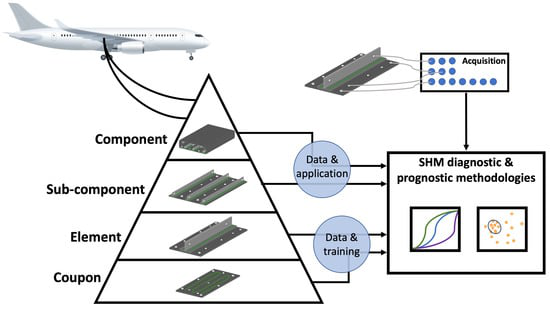Cyber-Physical Structural Assets: The need for multi-sensing strategies in composite aerospace structures
Abstract
The core of a cyber-physical structural asset design is to ensure the availability of real-time information which will allow the performance of diagnostic tasks and future state predictions, enabling optimum operational decisions. The stream of real-time information can be achieved by the utilization of sensing technologies, in the form of permanently installed sensors - structural health monitoring (SHM). However, applying SHM in the aerospace industry has not yet fully matured1 and especially its application to composite structures is challenging. For a realistic aircraft maintenance scenario, one must consider the needs of the maintenance engineer at the final application: what type of health management information is required to make further maintenance decisions for an aircraft? This requires a full consideration of all four SHM levels; 1) damage detection, 2) its location, 3) damage type identification and 4) its effect on the structural integrity and even to expand damage prognostics. It is apparent that for composite structures, that exhibit complex failure mechanics, a multi-sensing strategy should be employed to fulfil this 4-step procedure2. Furthermore, in an in-service scenario, large complex composite aircraft structures will be monitored under realistic loading conditions, which requires reliable, probabilistic, and upscalable algorithms3.
This paper explores the concept of multi-sensing strategy, its opportunities, advantages, and limitations and it demonstrates the first indications of how multiple SHM techniques and data fusion concepts can be incorporated by presenting a high-level design of a conceptual SHM system for a complex multi-stiffener composite aircraft wing structural component.

Figure 1: Structural health monitoring (SHM) pyramid approach for upscaling composite aircraft structures based on the building-block approach for structural testing1.
References
- P. Cawley, Structural Health Monitoring: Closing the gap between research and industrial deployment. Struct. Health Monit. 2018, 17, 1225–1244.
- A. Broer, R. Benedictus, D. Zarouchas. The need for multi-sensor data fusion in structural health monitoring for composite aircraft structures. Aerospace 9 (4), 183, 2022.
- F. Falcetelli, N. Yue, R. Di Sante, D. Zarouchas. Probability of detection, localization and sizing: The evolution of reliability metrics in Structura Health Monitoring. Struct. Health Monit. 20222, 21, 2290-3017.
Location: Building 19, Level 3, Hall 1-2.
Speakers
Dimitrios Zarouchas
Professor at Delft University of Technology